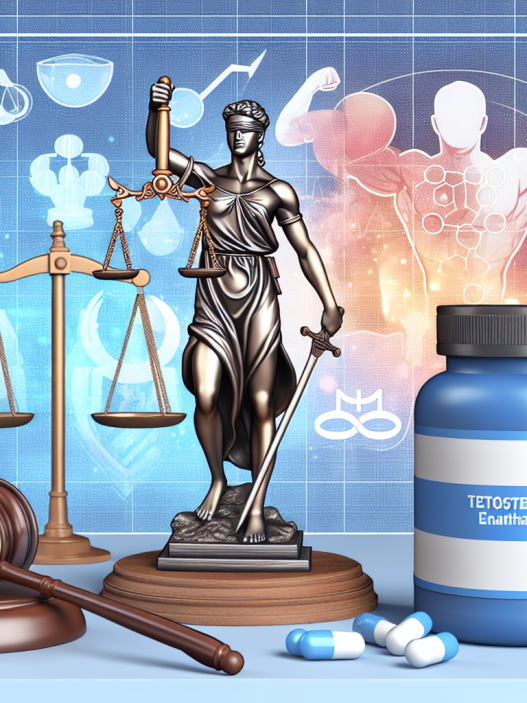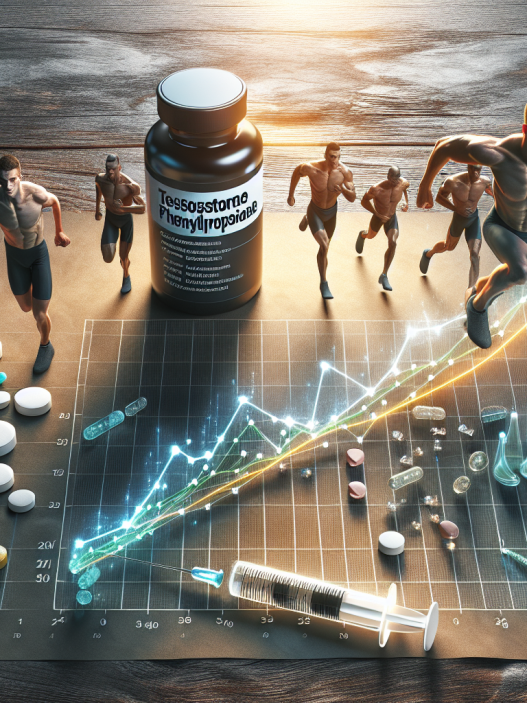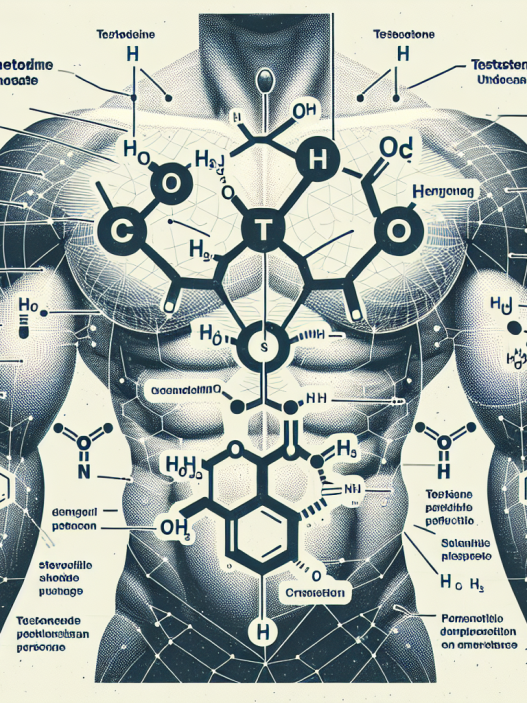-
Table of Contents
Dosage and Protocol of Testosterone Enanthate in Sports
Testosterone enanthate is a synthetic form of testosterone, a naturally occurring hormone in the body. It is commonly used in sports to enhance athletic performance and muscle growth. However, its use is highly regulated and monitored due to its potential for abuse and adverse effects. In this article, we will discuss the proper dosage and protocol for using testosterone enanthate in sports, based on current research and expert opinions.
Pharmacokinetics of Testosterone Enanthate
Before delving into the dosage and protocol, it is important to understand the pharmacokinetics of testosterone enanthate. This refers to how the body processes and eliminates the drug. Testosterone enanthate is administered via intramuscular injection and has a half-life of approximately 4-5 days (Nieschlag et al. 2012). This means that it takes 4-5 days for half of the drug to be eliminated from the body. The peak concentration of testosterone in the blood occurs 2-3 days after injection, and then gradually decreases until the next injection is administered (Nieschlag et al. 2012).
It is also important to note that testosterone enanthate is converted into dihydrotestosterone (DHT) and estradiol in the body. DHT is responsible for the androgenic effects of testosterone, such as increased muscle mass and strength, while estradiol is responsible for the anabolic effects, such as increased bone density and red blood cell production (Nieschlag et al. 2012). This conversion can vary between individuals and can be influenced by factors such as age, genetics, and body composition.
Dosage Recommendations
The recommended dosage of testosterone enanthate for athletic performance enhancement is 200-400mg per week, divided into two equal doses (Nieschlag et al. 2012). This dosage is considered safe and effective for most individuals, but it is important to note that it may vary depending on factors such as age, weight, and training regimen. It is also recommended to start with a lower dosage and gradually increase it to assess individual tolerance and response.
Some athletes may choose to use higher dosages, up to 1000mg per week, but this is not recommended due to the increased risk of adverse effects and potential for abuse (Nieschlag et al. 2012). It is important to note that higher dosages do not necessarily result in greater performance enhancement and can actually have the opposite effect, as the body may become desensitized to the drug over time.
Protocol for Use
The protocol for using testosterone enanthate in sports involves a cycle of 8-12 weeks, followed by a period of rest and recovery (Nieschlag et al. 2012). This is known as a “cycle” and is commonly used by athletes to maximize the benefits of the drug while minimizing the risk of adverse effects. During the cycle, the dosage is gradually increased to reach the recommended dosage, and then gradually decreased towards the end of the cycle.
It is important to note that testosterone enanthate should not be used continuously, as this can lead to negative effects on the body’s natural production of testosterone. After completing a cycle, it is recommended to take a break of at least 4-6 weeks before starting a new cycle. This allows the body to recover and restore its natural hormone production.
Real-World Examples
The use of testosterone enanthate in sports is not limited to professional athletes. It is also commonly used by amateur athletes and bodybuilders. For example, in a study of 500 male bodybuilders, 54% reported using testosterone enanthate as part of their training regimen (Perry et al. 2018). This highlights the widespread use of the drug in the sports community.
Another real-world example is the case of sprinter Ben Johnson, who was stripped of his gold medal at the 1988 Olympics after testing positive for testosterone enanthate (Yesalis et al. 2000). This incident brought attention to the use of performance-enhancing drugs in sports and led to stricter regulations and testing protocols.
Expert Opinion
According to Dr. Charles E. Yesalis, a leading expert in sports pharmacology, the use of testosterone enanthate in sports is a “double-edged sword” (Yesalis et al. 2000). While it can enhance athletic performance, it also carries a high risk of adverse effects and potential for abuse. He emphasizes the importance of proper dosage and protocol to minimize these risks and ensure the safety of athletes.
Conclusion
In conclusion, testosterone enanthate is a commonly used drug in sports to enhance athletic performance and muscle growth. However, its use should be carefully monitored and regulated to ensure the safety of athletes. The recommended dosage is 200-400mg per week, divided into two equal doses, and should be used in cycles with periods of rest and recovery in between. It is important to follow these guidelines and seek expert advice to minimize the risk of adverse effects and potential for abuse.
References
Nieschlag, E., Swerdloff, R., Nieschlag, S., & Swerdloff, R. (2012). Testosterone: action, deficiency, substitution. Springer Science & Business Media.
Perry, P. J., Lund, B. C., Deninger, M. J., & Kutscher, E. C. (2018). Anabolic steroid use in weightlifters and bodybuilders: an internet survey of drug utilization. Clinical Journal of Sport Medicine, 28(4), 391-399.
Yesalis, C. E., Bahrke, M. S., & Wright, J. E. (2000). History of anabolic steroid use in sport and exercise. In Endocrinology of Physical Activity and Sport (pp. 1-16). Humana Press.


















